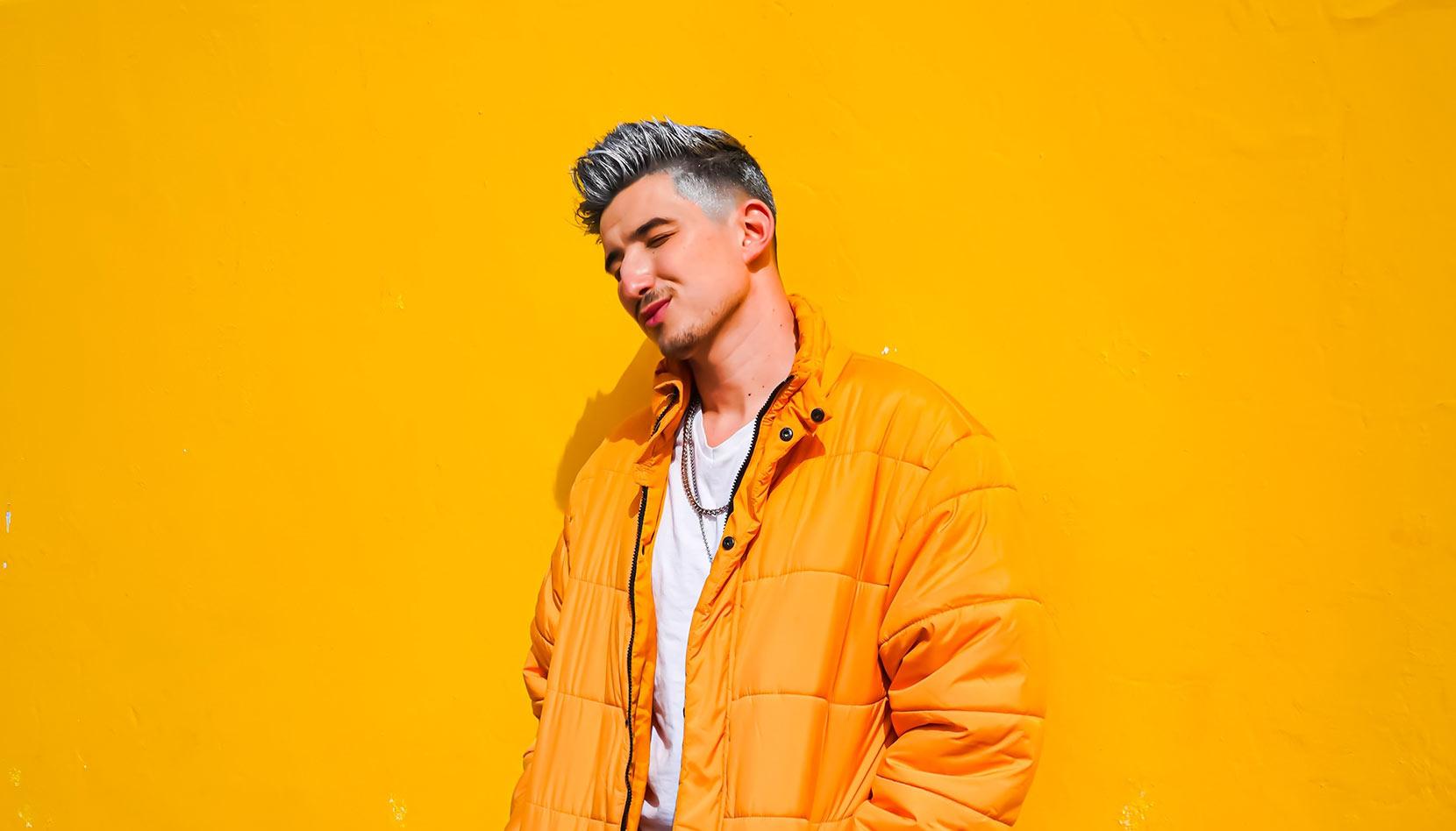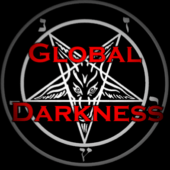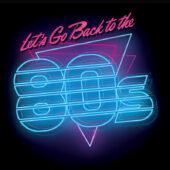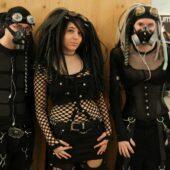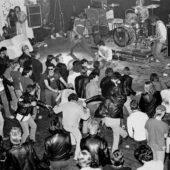Every Rolling Stones Tour, Ranked: Critic’s Picks
On July 12, 1962, The Rolling (then Rollin’) Stones played their first show at the famed Marquee Club in London. By the fall of 1963 they were on the road in Europe, on the low end of a package with the Everly Brothers, Little Richard, Bo Diddley and more.
Flash forward 60-plus years, and they’re filling the world’s biggest stadiums — as they have been since the mid-’70s — with the current North American leg of their Hackney Diamonds Tour.
Few acts boast the kind of road resume the Stones have built over the decades. Conservative estimates put the group’s tally at more than 2,000 concerts for more than 45 million people — including an estimated 1.5 million alone on Feb. 18, 2006 at Copacabana Beach in Rio de Janeiro, Brazil. And sometimes it seems like Mick Jagger has worn precisely that same number of outfits during all those years of performing.
Two of the Stones’ treks — A Bigger Bang from 2005-2007 and No Filter from 2017-2021 — are among the top 10 grossing tours of all time, according to Billboard Boxscore. The group’s two ’90s tours, Voodoo Lounge and Bridges to Babylon, ranked No. 1 and No. 2 for that decade, and A Bigger Bang topped the 2000s. Clearly, we like it when the Stones come to town — yes we do.
Why? So many reasons — not the least of which is a wealth of rock anthems the Stones dependably deliver most every time they hit the stage. There’s also staging, which is just as dependably awesome, and a sense of seeing bona fide history on display. We can certainly marvel at (and maybe be a little jealous of) Jagger’s continued vigor as he nears 81, and take comfort in the fact that Keith Richards, also 80, is still inexplicably with us despite behaviors that would take most everyone else off this mortal coil. “How do you make rock ‘n’ roll grow up? It seems to me that’s a very interesting question, and we’re the only answer,” Richards told this writer back in 2005. “When we finally croak, you’ll find out how long we can do this.”
The Hackney Diamonds Tour, which began April 28 in Houston and runs through July 17 in North America, is showing that the Stones have yet to gather any moss. Invigorated by a strong new album of the same name, the early shows have featured strong performances and changing set lists, and fans are still coming in droves.
And that has us thinking back over the group’s touring history, and the enormous legacy that’s been created since those Stones started rolling. Check out our ranking of the band’s 17 tours below,
-
British and American Tours (1964) / Irish Tour (1965)

Image Credit: Daily Mirror/Mirrorpix/Mirrorpix/Getty Images Dubbed “England’s Newest Hitmakers,” The Stones began headlining on Jan. 6 at London’s Granada Theatre and would not be looking back after that. With Ian Stewart alongside on piano, the group was more exciting than seasoned, playing mostly covers, along with the “I Wanna Be Your Man” single John Lennon and Paul McCartney gifted to them. The footage and recordings that exist seem charmingly modest and rudimentary now, but those deafening audience screams showed that, undeniably, this was just the start of something substantial.
-
British, European, American and Irish Tours (1965)
The Stones had every reason to have more swagger throughout 1965, as the group released three albums (The Rolling Stones No. 2, The Rolling Stones, Now! and Out of Our Heads) and began to put originals on the charts. “(I Can’t Get No) Satisfaction” started being played on the second Irish Tour (documented in the film Charlie Is My Darling), while “Get Off My Cloud” and “19th Nervous Breakdown” also became part of the setlists before the end of the year. Got Live If You Want It!, recorded during the year’s first British Tour in March and released in late 1966, captures that early mania.
-
Australasian, European, American and British Tours (1966-1967)
The Stones were clearly coming into their own, with increasingly evolved albums like Aftermath and Between the Buttons, which meant the shows became more about the band than its influences — especially by the time the U.S. arena dates started in June. It was still hard to hear the group over the screaming, but this last run with Brian Jones showed exponential growth — although it would be a couple years before they’d hit the road again.
-
U.K. Tour (1971)
About to go into tax exile in the south of France (and make Exile on Main Street), the Stones made a quick (18 shows, 10 dates) March run of their homeland. They retained the horn section from Europe ’70 and played a number of songs from the Sticky Fingers album, which came out a month after the tour ended.
-
Bridges to Babylon Tour (1997-1998)

Image Credit: Paul Natkin/WireImage Playing 102 dates in 25 countries for more than 4.5 million people, this was one of the Stones’ most extensive tours yet — though box-office wise it came in second, at the time, to the Voodoo Lounge Tour in 1994-1995. Former Beach Boys member Blondie Chaplin joined the backing vocalist team this time, and a genuine bridge came forward from the front of the stage to take the Stones to a B-stage for three songs each night. The tour also introduced in Internet vote that allowed fans to choose one song each night; “Gimme Shelter,” in fact, was added to the regular set after topping the poll four shows in a row. The tour also brought the Stones to Russia for the first time, playing Luzhniki Stadium in Moscow on Aug. 11, 1998.
-
Tour of the Americas (1975) / Tour of Europe (1976)
Another two-year break, and another new guitarist: Ron Wood had joined from the splintering Faces to replace Mick Taylor. The horn section was gone, but Billy Preston was back from ’72, even playing two of his own hits in the middle of the Stones set. The glimmering, flower-shaped stage was the Stones’ glitziest yet and Jagger’s wardrobe his most eclectic, while the shows were the longest the group had performed to date, clocking in at two hours or more to keep up with industry standards, after being criticized for being too short on previous tours.
The trek also took the Stones into stadiums for the first time. With no new album, the ’75 sets focused on the greatest hits, while the European leg repertoire the following year featured several tracks from the just-released Black and Blue album. Eric Clapton and Carlos Santana were guests at the Madison Square Garden spot, while Clapton returned for a ’76 show in Leicester, England. The Paris ’75 shows yielded three sides of eventual live release Love You Live, while notorious shows the following year at the El Mocambo club in Toronto — in the wake of Richards’ drug bust and near incarceration — filled out the fourth.
-
U.S. Tour (1978)
This relatively brief — 24 shows — trek came on the heels of Some Girls, the Stones’ best studio album in at least six years, and maybe more. Wood was clearly more comfortable in the ranks at this point, and the new material provided a spark that was missing on the previous North American run in ’75. The itinerary mixed stadiums, arenas and theaters, and an intriguing roster of opening acts — Patti Smith, Van Halen, Journey, Kansas, the Doobie Brothers, Peter Tosh, Eddie Money, Etta James, Peter Tosh — brought new flavors each night. This was also the first time the idea of a farewell tour was invoked, but 46 years on…well, yeah, right.
-
No Security Tour (1999)
The Stones got “small” again — a relative term, but they moved from stadiums to arenas, at least during the early-year winter leg in North America, for the first time since 1981. Promoting a live album of the same title, No Security was dominated by hits and other favorites, though it was nice to hear the Stones roll out “(Get Your Kicks on) Route 66” again. In Europe that spring, meanwhile, the group was back in stadiums, making up postponed dates from the Bridges to Babylon tour.
-
Steel Wheels Tour/Urban Jungle Tour (1989-1990)
The vaunted comeback after a seven-year hiatus and an acrimonious schism between Jagger and Richards that kept the Stones from rolling. They kissed, made up, made a new album (Steel Wheels) and then made a lot of money — a record-setting $175 million in North America alone. Also covering Japan and Europe, these tours introduced an expanded band with more than twice as many adjunct musicians than actual Stones, including the Uptown Horns, longtime saxophonist Bobby Keys, keyboardist/musical director Chuck Leavell (Allman Brothers Band, Sea Level) and backing vocalists Lisa Fisher and Bernard Fowler. The stadium-sized, Mark Fisher-designed staging was generous, introducing inflatables and pyrotechnics, which provided a title to the subsequent live album Flashpoint.
-
Zip Code (2018) / America Latina Ole / No Filter Tour (2017-2021) / Sixty (2022)

Image Credit: Martin Bernetti/AFP/Getty Images With these interchangeable tours the Stones introduced their contemporary modus, playing a limited number of shows at a time, with plenty of days in between. The result has been consistently strong performances although, without new material to speak of, a sense of treading water. That said, the hits have been as good as ever, and new arrivals such as Karl Denson on saxophone and Sasha Allen fit in well. The 2021 U.S. dates, of course, were the Stones’ first ever without Charlie Watts, who passed away Aug. 24, 2021 at the age of 80; Steve Jordan proved to be the right fill-in, and with mortality raising its inevitable head (unless, perhaps, you’re Richards), the Stones seemed a different kind of driven and more visibly appreciative of the legacy they’re maintaining.
-
50 & Counting (2012-2013) / 14 On Fire (2014)
They did it for 40, so why not 50? The Stones’ golden anniversary tour was a limited affair, with just 30 dates in North America, the U.K. and France, mostly in arenas. Bill Wyman and Mick Taylor made guest appearances in London, while Mary J. Blige, Gwen Stefani, Eric Clapton, Bruce Springsteen, John Mayer, Keith Urban and others showed up at various dates. For those who couldn’t join the celebration in person, there was a book (The Rolling Stones: 50), a documentary (Crossfire Hurricane) and a compilation album (GRRR!). During 2014, the Stones took the party to Europe, Asia, Oceania and Israel — the band’s first appearance there, after authorities had banned the band back in the 60s.
-
Voodoo Lounge World Tour (1994-1995)
The Stones’ first trek without founding bassist Bill Wyman (and with Darryl Jones, who’s been there ever since) was another box office triumph, setting a new record with $320 million in North America and 6.5 million attendees worldwide. Songs from another solid new album, Voodoo Lounge, took their place alongside the weathered favorites as the Stones rolled their way through Africa, Asia, Australia and New Zealand on the band’s most comprehensive global journey yet. And keeping to the Voodoo theme, there were stilt-walkers and other New Orleans-style touches, plus more inflatables.
-
A Bigger Bang (2005-2007)
The Stones’ first new studio album in eight years — at No. 3, its 23rd consecutive Top 5 on the Billboard 200 — put the group back on the road again for two years (albeit with long breaks between legs). The vehicle to the second stage this time was a moving platform, which glided along the ramp Jagger also used to get closer to the crowd. An extensive video production and pyrotechnics dominated the visuals, and balconies were constructed as part of the stage set for big spenders.
A Bigger Bang set another box office record, with $558.3 million just in North America, and special shows included the Stones’ first-ever appearance in China; a Beacon Theatre date in New York City and a benefit for the Robin Hood Foundation at New York’s Radio City Music Hall nearly seven months later; a halftime performance at Super Bowl XL in Detroit; and a Feb. 18, 2006 performance on Copacabana Beach in Rio de Janeiro for a reported crowd of more than 1.5 million. On that night, the Stones may well have gotten some satisfaction.
-
Licks Tour (2002-2003)

Image Credit: Dave Hogan/Getty Images The Stones’ celebrated their 40th anniversary in exuberant fashion, with flexible set lists — reportedly 80 songs were played throughout the tour — and three night stands in some cities that included a gig each at a stadium, arena and theater. For some shows the group included segments spotlighting one of its classic albums. The outing took the group from Toronto to it’s first-ever performances in Hong Kong, with an HBO special filmed at Madison Square Garden. Its most notable show, perhaps, was July 30, 2003 at the Molson Canadian Rocks for Toronto, a day-long benefit before nearly half a million fans to help the city recover from the SARS outbreak that began the year before.
-
American Tour (1981) / European Tour (1982)
The Stones had another solid album, the vault-diving Tattoo You (its eighth consecutive No. 1 on the Billboard 200), to promote on its return to the road after three years off — and made the most of it with long (at least two dozen songs) shows that included covers of the Temptations’ “Just My Imagination (Running Away With Me),” Eddie Cochran’s “Twenty-Flight Rock” and the Miracles’ “Going to a Go-Go,” which was released was released as a single from 1982’s Still Life souvenir. Kazuhide Yamazaki designed the colorful stage, which included a cherry picker that took Jagger above the crowd.
Ticket sales broke records, and the band raised eyebrows by accepting a reported $1 million sponsorship from Jovan Musk — which opened the floodgates for the practice within the industry. Mick Taylor, meanwhile, returned to guest at the Dec. 14 show in Kansas City — and, on Oct. 9 a pre-superstardom Prince was booed off stage while opening for the Stones at the Los Angeles Memorial Coliseum, and only appeared the next night after getting a pep talk from Jagger.
-
American Tour (aka S.T.P. Tour) (1972) / Pacific Tour (1973) / European Tour (1973)
Legends of drugs, debauchery (this was where the unreleased Cocksucker Blues documentary was filmed, after all) and riots abound from this global jaunt — especially the U.S. leg, where memories of the 1969 Altamont tragedy fueled sensational coverage and there were battles between fans and police in many cities. A bomb blew up the Stones’ equipment truck in Montreal, and after Jagger and Richards were jailed following a fracas with a photographer in Boston, Mayor Kevin White bailed them out to keep things peaceful at Boston Garden. Phew.
On stage, meanwhile, the Stones were hot, and buoyed by strong new material from that year’s Exile on Main Street. Guitarist Mick Taylor was even more fully integrated into the band, the horn section made its U.S. debut, Nicky Hopkins joined Ian Stewart on piano and Stevie Wonder kicked ass in the opening slot. The cycle included a Jan. 18, 1973 benefit concert for victims of the December 1972 earthquake in Nicaragua, before the Stones headed Down Under — and the arrival of Goats Head Soup before the European tour brought more fresh material into the set, while Billy Preston served double duty as opening act and keyboardist for the Stones.
-
American Tour (1969) / European Tour (1970)

Image Credit: Bettmann Archive/Getty Images This is arguably where the Stones earned their Greatest Rock ‘n’ Roll Band in the World sobriquet. The group had been off the road for a then-unheard-of two years, but had made plenty of news with drug busts, new albums (Their Satanic Majestics Request, Beggars Banquet) and so on. The cycle was both triumphant and tragic; it began with Brian Jones’ dismissal from the band and his subsequent death, with the famed July 5, 1969 concert in front of up to half a million people in London’s Hyde Park occurring just days after his passing.
The American Tour, meanwhile, ended with the ill-fated closing concert at the Altamont Speedway in Tracy, Calif., where security clashed with fans and one man was fatally stabbed (documented, along with the tour, in the Maysles brothers’ 1970 documentary Gimme Shelter). Prior to that, however, the Stones were on fire, as captured by the Get Yer Ya-Ya’s Out live album, with material from the Beggars Banquet and Let It Bleed albums and opening sets by Ike & Tina Turner, B.B. King and Terry Reid. The group added two horn players for the European Tour, and even began previewing Sticky Fingers songs such as “Brown Sugar” and “Dead Flowers.”










